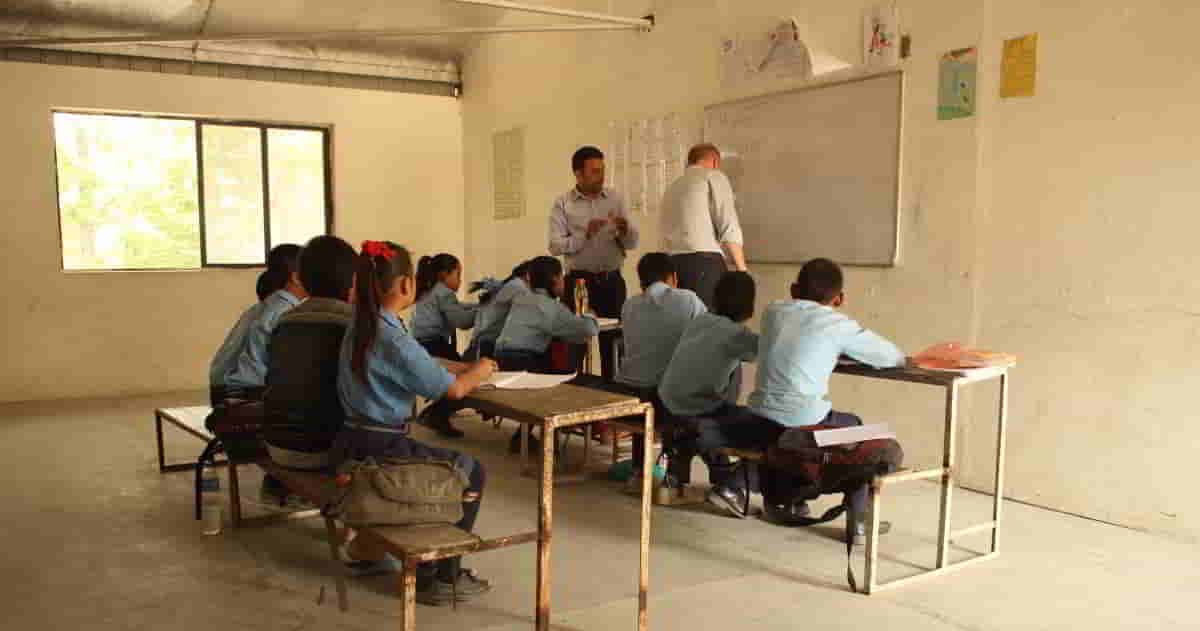
In the recently posted Science blog post Teach to Learn; Learn to Teach, I touched on the importance of being open to trying new ways of teaching and looking for opportunities to learn as a teacher in general.
When one starts a lesson in the classroom, a teacher needs to also learn first — namely, where the students are with their level of understanding of the materials.
Since returning to Nepal from the US, I have been helping science teachers at Jana Uddar School, the first Collaborative School in the country managed by my mate Pete Pattisson. I do a number of things: observe their lessons and provide feedback, help them with lesson ideas/plans, team teach and teach
One of the first day that I taught at the school by myself, I taught two lessons: fifth graders and tenth graders, and had a lot of fun!
In general, this is what happens in a government (public) school science classroom.
The teacher walks in, asks the students to open the book to the right lesson in the book — yes, what would have been chapters in textbooks are actually called “lesson” — then start teaching from the book. The teacher lectures them on pretty much what appears in the book, and not much else. The talking is accompanied by writings/drawings on the board that which, again, is in the book. Most of the students’ time during a lesson is basically spent listening to and copying from the board what is in the book!
With young children, such as the eleven or so year-old fifth graders, teaching should be interactive.
It must, by necessity, provide opportunities for them to express themselves.
That, among other things, provides valuable clues to the teacher about the students’ prior knowledge and understanding of relevant concepts. And that in turn, helps the teacher identify and fill holes that must be filled, if necessary, AND how to build on their foundational knowledge.
The fifth grade topic I had to teach, as you know already, was “Life Processes.” According to the textbook, the students were expected to learn about the following five processes:
- Nutrition
- Respiration
- Internal Transport
- Excretion, and
- Reproduction
Before the lesson, I had sat down with the teacher and planned a completely different lesson. I delivered it as well to show him how he could do things differently. (Incidentally, a vast majority of teachers in Nepal don’t make lesson plans; I would be impressed if even 1% do!)
I started the lesson by making the students close their eyes and asking them to imagine everything they did from when they woke up in the morning to when they went back to bed in the evening. I had them share the activities and discussed them. Many of the activities were related to them being a living being and therefore to the vital life processes all living beings engage in.
Discussing breathing/respiration as a life process, a student had mentioned how you would die if you didn’t breath. So, to test that theory, I had them play a game. A game of “who can hold their breath the longest?” while I timed them!
Not surprisingly, the children knew and understood why, as a living being, they engaged in many of the activities. And I had not, at any time during the lesson, had them open their textbook!
All that is really nothing novel in Science teaching in general, but very much so in a government school science classroom in Nepal. And that is what I am hoping to change with the work I do with teachers at Jana Uddhar and elswhere in Nepal, as well as with the science blogposts I publish.

